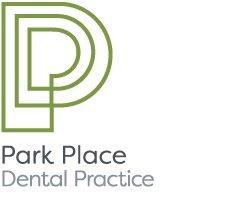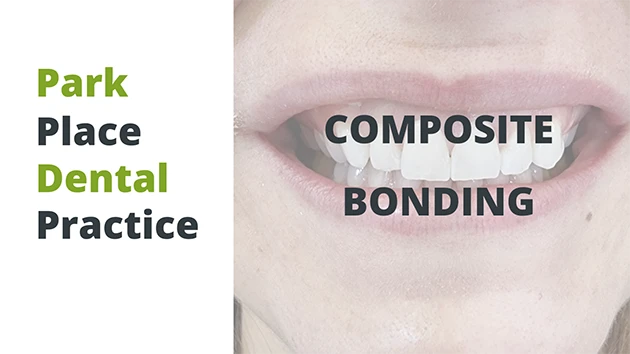
Dental Bonding Cardiff
Composite bonding is an effective cosmetic dentistry procedure that can significantly improve your smile. It’s particularly useful for fixing chips, cracks, and discoloration. Many patients choose this option because it’s minimally invasive and more affordable than some other cosmetic treatments.
The Composite Bonding Process
Composite bonding involves applying a tooth-colored resin to your teeth. Our dentists carefully shape and polish this resin to match your natural teeth. The process is straightforward:
1. We select a resin color that matches your teeth.
2. We prepare the tooth surface.
3. We apply and shape the resin.
4. We use a special light to harden the resin.
5. We polish the bonded area for a natural look.
Personalised Cosmetic Treatment
Each composite bonding treatment is tailored to your specific needs. We consider the shape, size, and color of your teeth to ensure the final result looks natural and enhances your smile.
Benefits of Composite Bonding
Composite bonding offers several advantages:
– It requires minimal alteration to your original tooth structure.
– The results look natural and blend with your own teeth.
– It’s usually completed in a single visit.
– It’s more affordable than many other cosmetic dental procedures.
– It’s effective for a variety of cosmetic issues.
Composite Veneers: Another Option
For those looking for a more comprehensive smile makeover, we also offer composite veneers. These are thin shells of composite resin that cover the front surface of your teeth.
Composite veneers can address:
– Discoloration
– Minor misalignments
– Gaps between teeth
– Chips or cracks
They offer a good balance of durability and aesthetics, and like bonding, they preserve much of your natural tooth structure.
Advanced Dental Technology
We use modern technology to ensure the best results for our patients. This includes:
– Digital imaging for precise treatment planning
– 3D scanning for accurate impressions
– High-quality bonding materials for better longevity and appearance
Composite Bonding Cardiff: Costs and Financing
We believe in transparent pricing for our composite bonding procedures. We offer various payment options to make treatment more accessible. During your consultation, we’ll provide a clear breakdown of costs and discuss any financing options that might be available.
Start Your Dental Bonding Treatment
If you’re interested in composite bonding or veneers, the first step is to schedule a consultation. We’ll assess your teeth and discuss the best options for your specific situation.
Contact Park Place Dental
Ready to improve your smile? Contact us to book your consultation:
– Call: 029 2037 3831
– Email: reception@parkplacedental.co.uk
– WhatsApp: 07592 597521
We’re here to help you achieve the smile you want.
PROCESS PICTURE 1
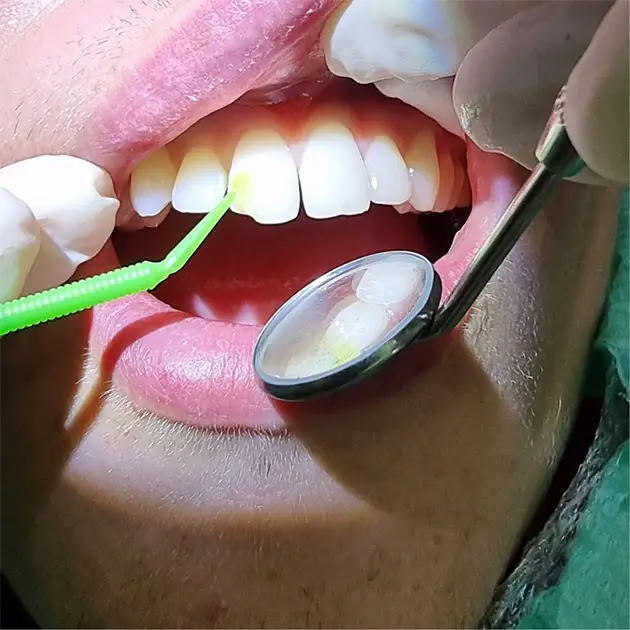
PICTURE 2
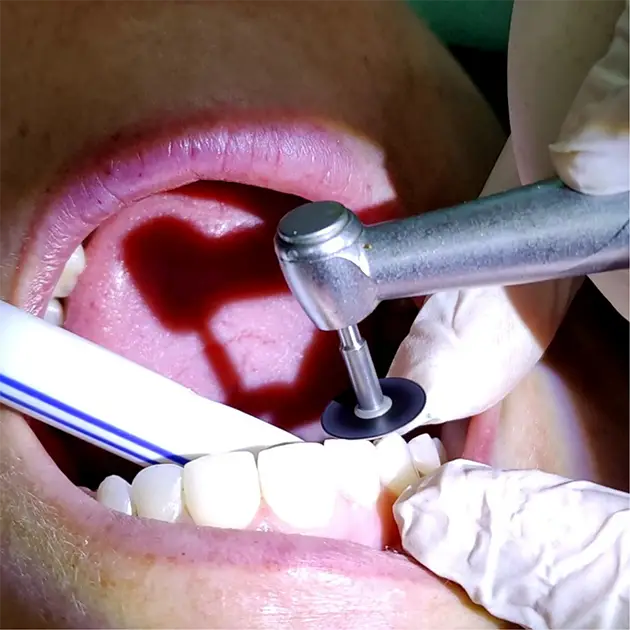
Composite Bonding Results
Here are some before and after pictures of composite bonding. These patients chose composite bonding to improve their smiles and repair chips or fractures.
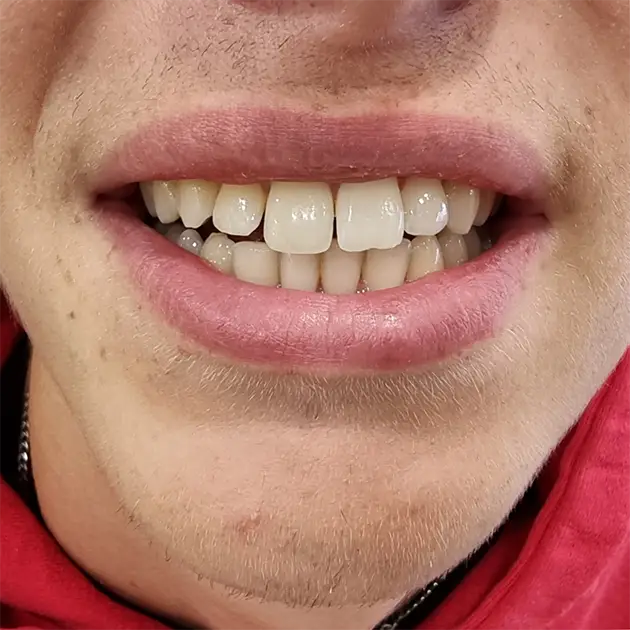
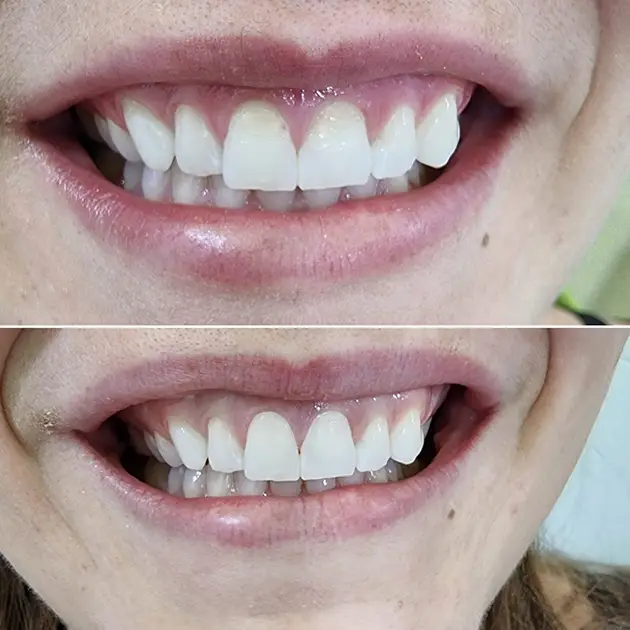
Composite Bonding Cardiff – Frequently Asked Questions
What is Composite?
Composite bonding refers to a cosmetic dentistry procedure that utilises a dental resin, known for its ability to be shaped, sculpted, and polished, rendering it virtually indistinguishable from your natural tooth. This characteristic makes composite bonding an exceedingly attractive option for individuals looking to enhance their smile without resorting to more extensive dental procedures such as veneers or crowns. Whether you’re aiming to transform a single tooth or multiple teeth, composite bonding provides a versatile solution to help you achieve your desired aesthetic. Moreover, it offers an effective way to brighten your smile, giving your teeth a whiter and more radiant appearance.
Benefits of Composite Bonding
Composite bonding stands out as a minimally invasive solution that can dramatically improve the appearance of your smile. It’s a procedure that not only enhances the cosmetic appeal of your teeth but also preserves the majority of your natural tooth structure, requiring little to no removal of the tooth surface.
Customisable Aesthetics
The composite resin used in bonding can be precisely matched to the shade of your natural teeth, ensuring a seamless integration. This customisability extends to the shape and size of the composite, allowing for a tailored approach to meet individual aesthetic goals.
Immediate Results
Unlike other cosmetic dental procedures that may require multiple visits or a longer treatment time, composite bonding typically can be completed in just one appointment. This efficiency provides an immediate transformation, making it a highly desirable option for those seeking quick aesthetic improvements.
Minimal Tooth Preparation
Composite bonding requires minimal tooth preparation compared to alternatives such as veneers or crowns. This aspect of the treatment is particularly beneficial for maintaining the integrity and health of your natural teeth, making composite bonding a conservative choice for cosmetic enhancement.
Applications of Composite Bonding
Composite bonding is employed in various dental scenarios, ranging from aesthetic modifications to restorative treatments. Its applications include but are not limited to closing gaps between teeth, repairing chipped or cracked teeth, and altering the shape or size of teeth to create a more harmonious smile.
Enhancing Tooth Colour
For individuals seeking a brighter smile, composite bonding can be an excellent way to achieve a whiter appearance. The resin’s colour can be selected to lighten the shade of your teeth, offering a cosmetic solution to discolouration or staining.
Correcting Dental Imperfections
Composite bonding is highly effective in correcting a wide range of dental imperfections such as chips, cracks, and gaps. Its versatility and ability to blend seamlessly with natural teeth make it an ideal choice for those looking to address specific aesthetic concerns.
Composite bonding represents a versatile, efficient, and conservative approach to cosmetic dentistry. Its ability to mimic the appearance of natural teeth, coupled with the broad range of applications, makes it a favoured option for individuals looking to enhance their smile. With the potential for immediate and significant aesthetic improvements, composite bonding continues to be a popular choice among those seeking cosmetic dental enhancements.
What are Composite Veneers and How Do They Differ from Composite Bonding?
Composite veneers are thin shells made from tooth-coloured resin material that are custom-crafted to cover the entire front surface of a tooth. While they share similarities with composite bonding, veneers offer a more comprehensive solution for enhancing the appearance of teeth.
Understanding Composite Veneers
Composite veneers provide a middle ground between traditional composite bonding and porcelain veneers. They offer more coverage than bonding but are less invasive and more affordable than porcelain veneers.
Key Differences from Composite Bonding
– Coverage: Veneers cover the entire front surface of the tooth, while bonding typically addresses specific areas.
– Preparation: Veneers may require minimal tooth preparation, whereas bonding usually requires no preparation.
– Durability: Composite veneers often last longer than bonding due to their more extensive coverage.
– Customisation: Veneers offer more opportunity for dramatic changes in tooth shape and colour.
Applications of Composite Veneers
Composite veneers are particularly useful for addressing multiple aesthetic concerns simultaneously, such as:
– Severe discoloration that doesn’t respond to whitening
– Significant chips or cracks
– Mild to moderate misalignment
– Gaps between teeth
Composite veneers provide a versatile solution for those seeking a more comprehensive smile makeover while still maintaining the benefits of a reversible, minimally invasive procedure.
Does Composite Bonding Hurt?
No! Composite bonding is recognised as a comfortable procedure that typically does not require the use of a local anaesthetic. The process is primarily additive, focusing on enhancing the natural structure of your teeth rather than removing or significantly altering it. This characteristic of composite bonding means that there’s usually no need to trim or polish your teeth during the procedure, making it a pain-free experience for the patient.
Understanding the Composite Bonding Procedure
Composite bonding is designed to be as non-invasive and gentle as possible. The procedure involves the application of a tooth-coloured resin material to the tooth’s surface, which is then shaped and hardened with a special light. This method allows for the correction of various aesthetic concerns without causing discomfort to the patient.
Preparation and Application
Unlike other dental procedures that might require significant preparation of the tooth structure, composite bonding necessitates minimal to no preparation. This aspect significantly contributes to the comfort of the procedure. The resin is carefully applied to the tooth and sculpted to achieve the desired shape and appearance, all without the need for drilling or cutting into the tooth.
Post-Procedure Sensitivity
Following the composite bonding procedure, patients typically report little to no sensitivity. This lack of discomfort is largely due to the procedure’s non-invasive nature, preserving the integrity of your natural teeth and avoiding exposure to sensitive areas.
Composite bonding offers a painless and efficient way to enhance the aesthetics of your smile. With no need for local anaesthesia and minimal impact on the natural tooth structure, patients can enjoy a comfortable experience and immediate improvements to their teeth’s appearance.
How Long Does Composite Bonding Take?
Cosmetic bonding is notably efficient, with treatment durations varying from as little as thirty minutes to a few hours. The exact time required depends largely on the number of teeth being treated and the specific outcomes you wish to achieve. While a single-tooth emergency repair may be completed swiftly, more extensive enhancements necessitate a thorough initial assessment and planning session.
Initial Assessment and Planning
Prior to commencing the composite bonding process, an initial consultation is essential. This appointment is dedicated to evaluating your suitability for the procedure and devising a plan to ensure your composite bonding not only looks its best but also offers lasting results. During this stage, your dental professional will discuss your aesthetic goals, examine your teeth, and determine the optimal approach to achieve your desired outcome.
The Procedure Timeline
The actual bonding process involves the precise application and sculpting of composite material on the affected teeth. For minor adjustments or emergency repairs, the procedure can be exceptionally quick. However, for more comprehensive enhancements that involve multiple teeth, additional time will be required to meticulously achieve a natural and appealing result.
Factors Influencing Duration
Several factors can influence the duration of the composite bonding procedure. These include the complexity of the dental issues being addressed, the number of teeth involved, and the specific cosmetic goals of the patient. Your dental professional will provide an estimated treatment time after the initial assessment, tailored to your unique situation.
Composite bonding offers a swift and effective solution for improving the appearance of your teeth. With the potential for immediate cosmetic enhancements and the requirement for minimal preparatory work, it stands out as a convenient option for those looking to enhance their smile with minimal disruption to their daily lives.
How Long Does Composite Bonding Last?
Composite bonding is a durable cosmetic dentistry solution, typically lasting around five years. To maximise the longevity and maintain the aesthetic appeal of your composite bonding, it is advisable to adhere to a regimen of regular dental hygiene appointments, ideally every six months, coupled with the re-polishing of the composite material every one to two years.
Maintaining Your Composite Bonding
The lifespan of composite bonding can vary depending on several factors, including the location of the bonding on the teeth, your oral hygiene practices, and your dietary habits. By following a consistent oral hygiene routine and scheduling regular dental check-ups, you can significantly extend the life of your composite bonding.
Regular Dental Hygiene Appointments
Scheduling dental hygiene appointments every six months is crucial for maintaining the health of your teeth and the integrity of the composite bonding. These appointments allow for professional cleaning, which helps prevent plaque buildup and staining, thus preserving the bonding material’s appearance and longevity.
Re-polishing Composite Bonding
To maintain the lustre and smoothness of the composite material, re-polishing every one to two years is recommended. This process helps to refresh the appearance of the bonded teeth, ensuring that your smile remains bright and your bonding continues to blend seamlessly with your natural teeth.
By adhering to these maintenance recommendations, you can enjoy the benefits of composite bonding for many years, ensuring that your smile remains vibrant and your teeth stay protected. Remember, the key to long-lasting composite bonding lies in regular care and maintenance.
How Long Do Composite Veneers Last Compared to Composite Bonding?
Composite veneers typically have a longer lifespan compared to composite bonding, usually lasting between 5 to 7 years with proper care. This extended durability is due to the more comprehensive coverage and slightly thicker layer of composite material used in veneers.
Factors Affecting Longevity
The lifespan of composite veneers, like bonding, can be influenced by various factors including oral hygiene practices, dietary habits, and lifestyle choices.
Maintenance for Longevity
To maximise the lifespan of your composite veneers:
– Maintain excellent oral hygiene with regular brushing and flossing
– Attend dental check-ups and hygiene appointments every 6 months
– Avoid biting on hard objects or using your teeth as tools
– Consider wearing a night guard if you grind your teeth
Comparison with Composite Bonding
While composite bonding typically lasts around 5 years, composite veneers often extend beyond this timeframe due to their more robust structure. However, both options may require touch-ups or refinishing to maintain their appearance over time.
Long-term Considerations
It’s important to note that while composite veneers last longer than bonding, they may not match the longevity of porcelain veneers. However, they offer the advantage of being more easily repaired or replaced if needed, and often at a lower cost than their porcelain counterparts.
By understanding the lifespan and maintenance requirements of composite veneers, you can make an informed decision about whether they are the right choice for your smile enhancement goals.
Can My Composite Bonding Chip or Stain?
Yes, composite bonding can chip and stain but it can also be repaired. To reduce the chances of the composite staining or chipping we advice avoiding excessive amounts of highly coloured foods (tea, coffee, red wine, curries etc) and avoiding biting hard objects on the edges of your teeth (pens, fingernails, hard sweets, etc.)
If you are looking for longer-term solutions for your smile you may want to consider porcelain veneers or orthodontic treatment, like Invisalign as this may be a better option for you. This can be discussed at your cosmetic consultation.
How Much Does Composite Bonding Cost?
Composite bonding is priced starting at £225.00 per tooth. We recognise that when multiple teeth are being treated, the overall cost can accumulate significantly. To accommodate this, we offer 0% interest-free finance options, designed to help you distribute the cost of your treatment across manageable monthly instalments.
Understanding the Value of Composite Bonding
The cost of composite bonding reflects the immediate aesthetic improvements and long-term benefits it provides. This investment not only enhances the appearance of your smile but also contributes to the health and functionality of your teeth.
Finance Options for Composite Bonding
To ensure that composite bonding is accessible to those who need it, we offer flexible finance plans. These plans are tailored to help you manage the cost of your treatment without financial strain, allowing you to enjoy the benefits of a renewed smile with ease.
Assessing Your Treatment Needs
During your initial consultation, we will provide a detailed assessment of your dental needs, including the number of teeth requiring treatment and the overall cost. This transparent approach allows you to make an informed decision about proceeding with composite bonding, with a clear understanding of the investment involved.
Our commitment to providing flexible payment options underscores our dedication to patient care, ensuring that you can access the treatments you need to maintain a healthy, confident smile.
Can Anyone have composite bonding?
Composite bonding is suitable for most patients, offering a versatile solution for repairing worn or chipped teeth, changing the colour of teeth, closing spaces between teeth, and altering the shape of teeth. To assess your suitability for composite bonding, we invite you to book a free smile assessment by calling us on 029 2037 3831.
Evaluating Your Suitability for Composite Bonding
Following your smile evaluation, we will be able to recommend the best long-term solution for your teeth and discuss the alternatives available. At Park Place Dental Practice, we are committed to helping every individual take control of their smile. We understand the impact a confident smile can have on a person’s life and strive to provide the best solutions to achieve the smile of your dreams.
Personalised Treatment Recommendations
Our approach to dental care is tailored to each patient’s unique needs. Whether your teeth are crooked, stained, or have other aesthetic concerns, we will offer the most effective solutions available. It’s important to note that while composite bonding is a highly effective treatment for many dental issues, there are instances where it may not be the best option due to the position of the teeth or the way the top and bottom teeth touch when you bite.
Alternative Options for a Perfect Smile
In cases where composite bonding is not suitable, we will always provide you with alternative suggestions and options. Our goal is to ensure that you can achieve the smile you deserve, regardless of the treatment path. Whether it involves exploring options like porcelain veneers, orthodontic treatments like Invisalign, or other cosmetic dental procedures, we are here to guide you towards the most appropriate and effective solutions for your dental needs.
At Park Place Dental Practice, our dedication to providing comprehensive dental care means that we consider all aspects of your oral health and aesthetic preferences. We are here to support you in achieving a healthier, more beautiful smile, offering expert guidance and personalised treatment plans tailored to your specific requirements.
Will I Be Able To See How My Smile Looks Before Committing to Composite Bonding?
Yes! For those planning to use composite bonding to enhance the appearance of multiple teeth, we offer a unique phase known as the trial smile phase. This step is designed to allow you to preview how your smile will look upon the completion of treatment before fully committing. It provides a tangible way to visualize the potential results, ensuring that any adjustments can be made to achieve the desired outcome.
The Trial Smile Phase
This crucial phase involves taking a mould of your teeth and capturing a few photographs of your smile. After carefully listening to your concerns and understanding your vision for the perfect smile, we proceed to design a bespoke solution tailored to your preferences.
Previewing Your New Smile
Once we are satisfied with the proposed smile design, we’ll arrange another appointment to showcase the ‘final result’. This preview can be achieved digitally through 3D models or by presenting physical models that accurately represent how your teeth will appear after composite bonding. This step is instrumental in assessing how the bonding will look in various expressions, such as smiling, laughing, and talking.
Refinement and Adjustments
Should there be any aspects of the design that require adjustments—whether it’s making teeth look longer, shorter, wider, or narrower—we can refine these directly. This process ensures that you are completely satisfied with the proposed outcome before proceeding to the final stage of treatment.
Once you are 100% happy with the visualisation of your new smile, we will schedule the final appointment. This session is when the composite bonding will be meticulously applied to your teeth, transforming your smile into the one you’ve envisioned. Through this detailed and patient-centred approach, we ensure that you embark on your composite bonding journey with confidence and excitement for the results to come.
Is Composite Bonding Reversible?
Yes, composite bonding can indeed be reversed. This process, while delicate, allows for the removal of the composite material applied during bonding treatments. It’s important to note, however, that removing composite bonding usually involves some degree of natural tooth loss. Despite this, the precision with which the composite is polished away generally ensures that any damage or issues to the teeth are minimal. In Cardiff, our dental professionals are equipped with the most advanced tools and techniques to safely and effectively reverse composite bonding when necessary.
The Reversal Process
The reversal of composite bonding is a carefully managed procedure aimed at minimising impact on the natural tooth structure. Using state-of-the-art equipment, our dentists meticulously remove the composite material, paying close attention to the preservation of underlying tooth enamel.
Advanced Techniques and Equipment
Our practice in Cardiff is committed to utilising the latest in dental technology and methods. This commitment ensures the safest possible removal of composite materials, reducing the risk of any serious dental issues post-removal.
Minimising Tooth Loss
Although some loss of the natural tooth is inevitable during the reversal process, our approach is designed to keep this to an absolute minimum. By carefully polishing away the composite material, we strive to maintain the integrity and health of your natural teeth.
While composite bonding is reversible, the procedure requires skilled hands and the right tools to ensure it’s done safely and effectively. Our Cardiff-based dental practice prides itself on providing such expertise, offering patients peace of mind when considering the reversal of their composite bonding.
How do I book an appointment?
To schedule your appointment, you can reach out to us in two convenient ways. You can send an email to reception@parkplacedental.co.uk or give us a call at 029 2037 3831. Our team is ready to assist you with booking your visit and answering any queries you may have about our services or your dental care needs.
How to find us
Opening Hours
Emergency Appointment
Out-of-hours Emergency Cover
Whenever possible, please contact us during normal surgery hours. In extreme emergencies more details can be found below.

